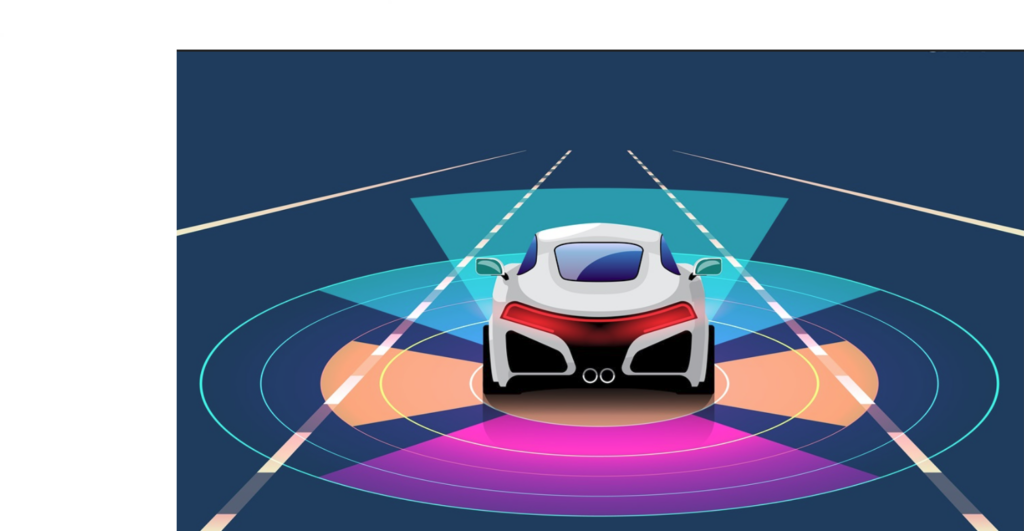
After a troubling increase of 7.2% in road deaths in 2015, reported by the NHTSA in August 2016, the importance of technology in making roads safer became even more apparent. This was the biggest jump in road deaths in almost 50 years, with 35,092 people losing their lives. Since human mistakes were a factor in 94% of these accidents, the need for better technology to prevent them became very clear.
ADAS Basics
Enter Advanced Driver Assistance Systems (ADAS) – not merely an enhancement but a cornerstone of modern vehicular safety, engineered to save lives. ADAS features a blend of technologies designed to enhance vehicle safety and driver convenience. These systems use a network of sensors and cameras, which work seamlessly with safety features that cars have been equipped with for decades. The integration of these systems provides a wide range of functions, from basic alerts to complex automated responses, aimed at preventing accidents and protecting passengers.
Examples of ADAS systems,
- Forward Collision Warning (FCW)
- Automatic Emergency Braking (AEB)
- Blind Spot Monitoring (BSM, BSW, or BSI) also called Lane Change Assistance.
- Adaptive Cruise Control (ACC)
- Lane Departure Warning or Lane Keep Assist (LDW or LKAS)
- Traffic Sign Recognition
- Cross Traffic Alert (CTA)
- Rear View Camera or Surround View Camera Systems
- Parking Assist systems
- Forward Facing Windshield Camera(s)
- Front Radar systems
- Parking Sensor systems
- Outside cameras on mirrors, grille, and rear liftgate or decklid
- Rear radar systems
- Antilock Brakes (ABS) and Traction Control (TCS)
- Electronic Power Steering (EPS)
- Heads Up Display (HUD)
- Electronic Stability Control (ESC)
- Automatic High Beam Systems
- Supplemental Restraints Systems (SRS)
These innovations enhance driver security and contribute to a more relaxed, less taxing driving experience, marking strides toward the goal of fully autonomous driving.
ADAS and Its Impact on Repair
The effectiveness of these safety systems, when they require repair, depends on the accuracy of the repair work. Incorrect or substandard repairs undermine their purpose and pose a grave risk. At our core, as specialists in ADAS repair, Smart Express champions the mastery of this technology and the meticulous adherence to manufacturer specifications in its maintenance.
To proficiently repair Advanced Driver Assistance Systems, it’s crucial first to grasp the fundamentals of the technology. A vehicle might come equipped with either a single or multiple systems operating in tandem. As technologies advance and evolve, these systems are subject to change and expansion.
A collision can impact a vehicle’s ADAS, requiring technicians to restore it to its original factory settings during repair. The responsibility of evaluating the vehicle’s ADAS and reinstating it to the Original Equipment Manufacturer’s specifications lies with the ADAS Repair Technician.
The evaluation process involves a technical scan using OEM factory tools and a thorough visual inspection. Upon arrival at the collision shop, a Pre-Scan of the vehicle is conducted to assess the condition of its systems, with all Diagnostic Trouble Codes (DTCs) recorded. The visual inspection focuses on identifying the location of damage and any systems that may be impacted, along with noting any necessary procedures required post-repair. It’s important to note that systems may register issues and store codes without warning lights on the instrument panel, underscoring the need for this comprehensive evaluation approach.
Throughout the repair process, disassembling the vehicle can trigger DTCs. To address this, a Post Scan is essential for eliminating collision-related codes and those incurred during repair. Additionally, any modules replaced might need programming or calibration at this stage. Collisions often necessitate further procedures as well. Persistent codes that resist clearing require further diagnosis and repair. Occasionally, codes unrelated to the crash or repairs may reappear; these should be meticulously recorded and communicated to the repair shop. The goal is to return the vehicle to the owner with a comprehensive “Health Check,” confirm.
ADAS Evolution and the Impact on Repair Experts
ADAS is transforming vehicles into sophisticated, connected mobile units powered by an intricate network of sensors and processors. This evolution requires us the ADAS service expert to plan for what is coming as much as to understand what is here today to be an effective professional. This shift requires us experts to adapt to more complex electronic architectures in vehicles. This means upskilling and familiarizing ourselves with the latest semiconductor technologies and interconnected systems that power these advanced ADAS features. Hence, the commitment of an ADAS technicians must go beyond mere repairs and focusing on maintaining the integrity, safety, and performance of these advanced systems.
For Smart Express as an organization an organization of ADAS repair professionals, embracing the ADAS revolution transcends merely adapting to new technologies; it entails spearheading the establishment of standards for safety, precision, and excellence in ADAS repairs.
